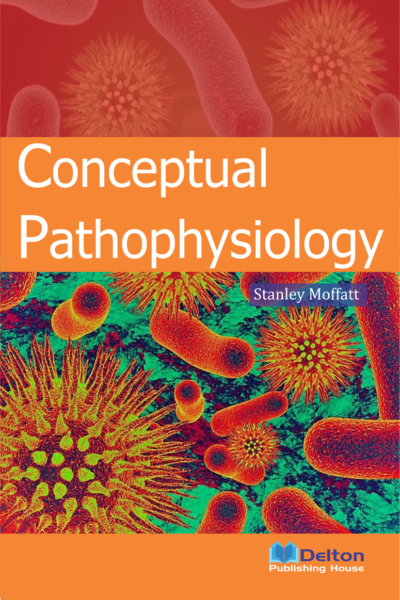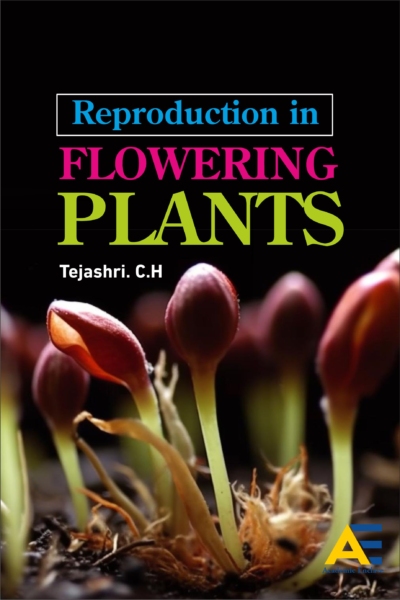Description
About the Book
The book “EXCLUSIVE BOTANY FOR NEET” was prepared as per the latest syllabus and the patterns of NEET. It contains nineteen chapters of Botany out of Biology incorporating all relevant topics. Special focus has been given to difficult topics. The comprehensive information in all chapters is followed by a limited number of most probable multiple-choice questions. Simple and easy multiple-choice questions were not included. The book contains all the relevant materials from the competition’s point of view by avoiding unnecessary verbosity and repetitions. The book was written systematically in lucid language. Short and long answer-type questions are given at the end of each chapter for intermediate students. The book also contains five model papers, each containing 50 probable multiple-choice questions at the end of chapters. I am convinced that the students will be able to perform well with greater confidence in the NEET and other related examinations. This book will also cater to the needs of all students associated with Botany.
About the Author
Dr. Khwaja Salahuddin is an Assistant Professor at the University Department of Botany, LN. Mithila University, Darbhanga, Bihar. He has been JRF and SRF of CSIR, New Delhi. He has been highly efficient in teaching the students of UG and PG levels. His knowledge of the subject is par excellent. He started teaching from Bahauddin Science College, Junagadh under the Government of Gujarat to brand coaching institutes of India to impart his quality education to the students who want to compete in the prestigious examination of NEET. To his credit, he has published over 20 research articles in noted, International and UGC-CARE-listed journals, and several book chapters. He has supervised 1 PhD student successfully and is currently guiding 2 research scholars. He has been on the editorial board of several international journals. He has almost fifteen years of experience in teaching.
Contents
Preface
Acknowledgements
1. THE LIVING WORLD
Diversity; Taxonomy: Types, branches; Taxonomic category; Taxonomic hierarchy; Types of species; ICBN; Binomial nomenclature; Short answer type questions and long answer type questions
2. BIOLOGICAL CLASSIFICATION
Kingdom system of classification; Archaebacteria; Bacteria; Cyanobacteria; Protista; Fungi; Mycorrhiza; Lichens; Viruses: TMV and Bacteriophage; Subviral particles (Virusoid, Viroid and Prion); Short answer type questions and long answer type questions
3. PLANT KINGDOM
General characters of plants; Algae; Bryophyta; Pteridophyta; Gymnosperms; Angiosperms; Short answer type questions and long answer type questions
4. MORPHOLOGY OF FLOWERING PLANTS
Forms of plants; Root, Stem, Leaf, Inflorescence, Flower, Fruit, Seed; Seed dormancy; Seed germination; Dispersal of fruit and seed; Description of families: Fabaceae, Brassicaceae, Solanaceae, Asteraceae and Liliaceae; Short answer type questions and long answer type questions
5. ANATOMY OF FLOWERING PLANTS
Tissue system: Epidermal, Ground, Vascular and Secretory tissue systems; Anatomy of root; Anatomy of the stem; Anatomy of the leaf; Short answer type questions and long answer type questions
6. CELL -THE UNIT OF LIFE
Discovery; Organisation of cell; Features of cell; Difference between prokaryotic cell and eukaryotic cell; difference between plant and animal cell; Bacterial cell; Gram staining method; Cell wall; Vacuole; Plasma membrane; Cytoplasm: Mitochondria; Plastid; Endoplasmic reticulum; Golgi apparatus; Ribosome; Microbodies (Lysosome, Peroxisome, Glyoxysome, Sphaerosome); Centriole; Cilia and Flagella; Cytoskeletons; Nucleus; Chromosome; Short answer type questions and long answer type questions
7. CELL CYCLE AND DIVISION
Cell cycle; Types of cell division: Amitosis, Mitosis, Meiosis; Differences between mitosis and meiosis; Short answer type questions and long answer type questions
8. PHOTOSYNTHESIS IN HIGHER PLANTS
Landmark achievements in photosynthesis; Photosynthetic pigments; Pigment systems; Light reaction; Chemiosmosis; Dark reaction; C4 Cycle; Photorespiration; Law of limiting factors; Factors affecting photosynthesis; Short answer type questions and long answer type questions
9. RESPIRATION IN PLANTS
Types of respiration; Glycolysis; Fermentation; Pyruvate oxidation; Krebs cycle; Electron transport chain; Oxidative phosphorylation; ATP; Factors affecting respiration; Respiratory quotient; Short answer type questions and long answer type questions
10. PLANT GROWTH AND DEVELOPMENT
Development; Growth; Plasticity; Phytohormones: Auxin, Gibberellin, Cytokinin, Abscisic acid and Ethylene; Short answer type questions and long answer type questions
11. SEXUAL REPRODUCTION IN FLOWERING PLANTS
Parts of flower; Development of male gametophyte: Structure of anther, Microsporogenesis, Microgametogenesis; Development of female gametophyte: Development of ovule, Megasporogenesis, Megagametogenesis; Pollination; Pollen-Pistil interaction; Fertilisation; Double fertilisation; Endosperm; Embryogenesis: Development of dicot embryo and monocot embryo; Polyembryony; Apomixis; Parthenocarpy; Short answer type questions and long answer type questions
12. PRINCIPLES OF INHERITANCE AND VARIATION
Theories of Heredity; Variation; Mendelian inheritance; Exceptions to Mendelism: Incomplete dominance, Codominance, Lethality, Pleiotropy, Multiple alleles, Polygenic inheritance, Linkage; Crossing over; Chromosomal theory of inheritance; Sex determination; Mutation: Features, types and their mechanism; Chromosomal aberration: Structural and Numerical; Sex-linked inheritance; Genetic disorders: Sex-linked and autosomal; Disorders due to genetic incompatibility; Chromosomal abnormalities: Autosomal and sex chromosomal; Approaches to studying human genetics: Population genetics and Pedigree analysis; Short answer type questions and Long answer type questions
13. MOLECULAR BASIS OF INHERITANCE
Genetic material; Evidence in favour of DNA: Transformation and Blender’s experiment; Structure of DNA, Double Helical model; Polymorphism in DNA; Difference between DNA and RNA; Packaging of DNA double helix; Nucleosome model; Replication of DNA; RNA; RNA world hypothesis; Types of non-genetic RNA: mRNA, rRNA and tRNA; Concept of gene; Types of the gene; Genetic code; Protein Synthesis: Transcription and translation; Regulation of gene expression: Inducible operon and repressible operon; Human Genome Project, DNA fingerprinting; Short answer type questions and Long answer type questions
14. MICROBES IN HUMAN WELFARE
Roles of microbes in household products; Roles of microbes in industrial products (Brewery, production of enzymes, organic acids, vitamins, amino acids, dextran, steroids, antibiotics); Roles of microbes in sewage treatment; Roles of microbes in biogas production; Biofertilizers, Green manuring; Biocontrol; Short answer type questions and long answer type questions
15. BIOTECHNOLOGY: PRINCIPLES AND PROCESSES
Branches; Achievements; Genetic engineering: Tools (Enzymes, vectors, host organism, bioreactor); Procedures; Agarose gel electrophoresis, Polymerase chain reaction; Direct gene transfer; Insertional inactivation; Short answer type questions and long answer type questions
16. BIOTECHNOLOGY AND ITS APPLICATIONS
Applications of Biotechnology in agriculture, medicine, industries, animal biotechnology and environment; Hazards of genetic engineering; Safeguards of genetic engineering; Initiatives of Govt. of India; Biosafety issues; Biopatents; Short answer type questions and long answer type questions
17. ORGANISMS AND POPULATION
Population: Features, Population interactions; Short answer type questions and long answer type questions
18. ECOSYSTEM
Types of ecosystems; Structural and functional components of the ecosystem: Productivity, Decomposition, Energy flow, Food chain, Food web, Trophic level, Ecological pyramids; Short answer type questions and long answer type questions
19. BIODIVERSITY AND CONSERVATION
Introduction, Levels of biodiversity, Types of ecological diversity; Patterns of biodiversity; Biodiversity in India, IUCN; Conservation approaches; conservation strategy; Short answer type questions and long answer type questions
MODEL PAPER-1
MODEL PAPER-2
MODEL PAPER-3-
MODEL PAPER-4
MODEL PAPER-5








Reviews
There are no reviews yet.